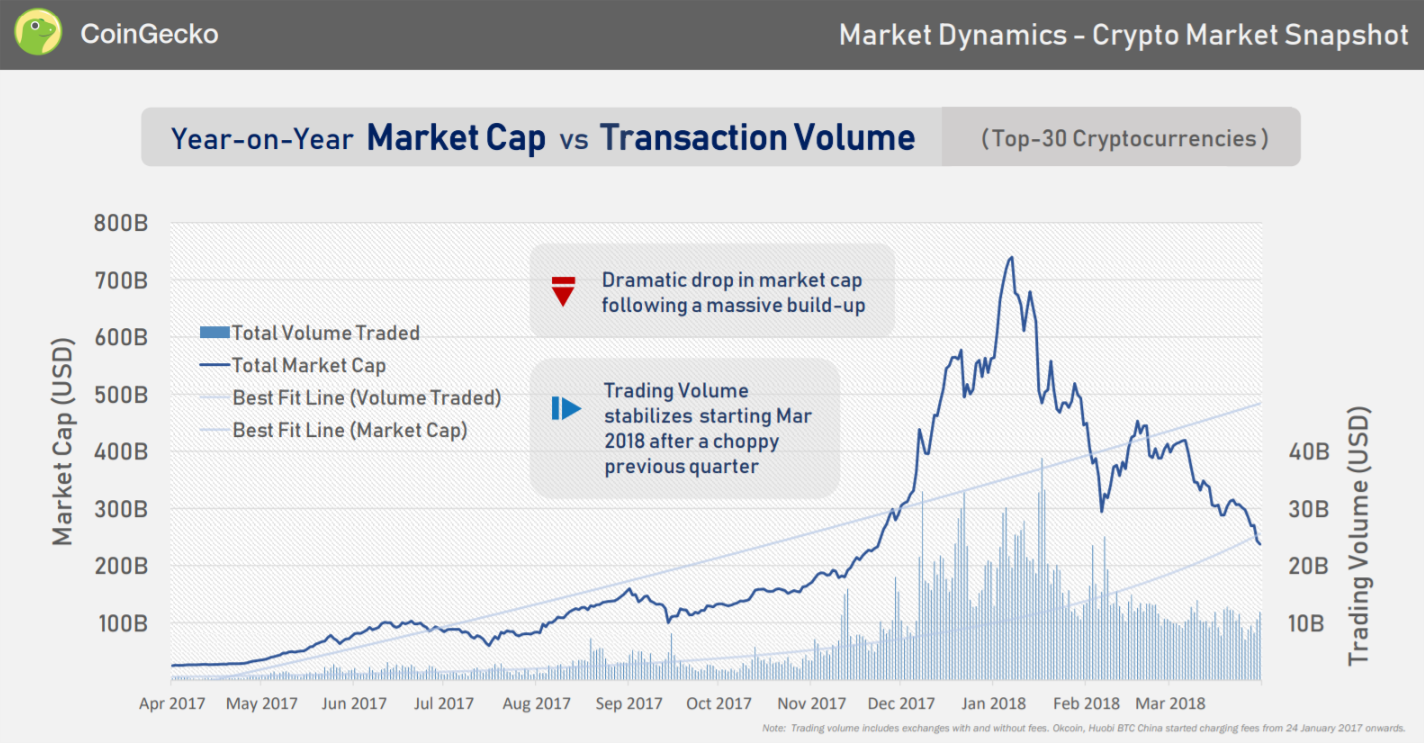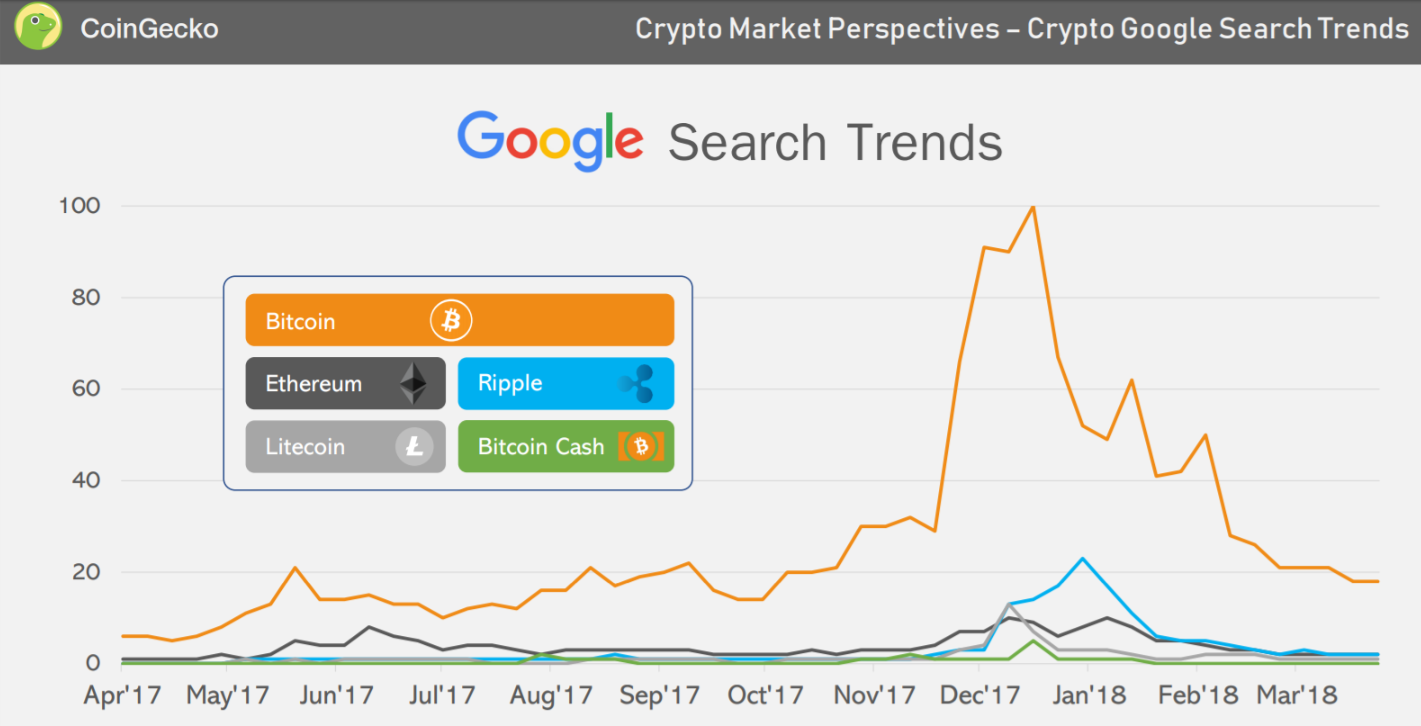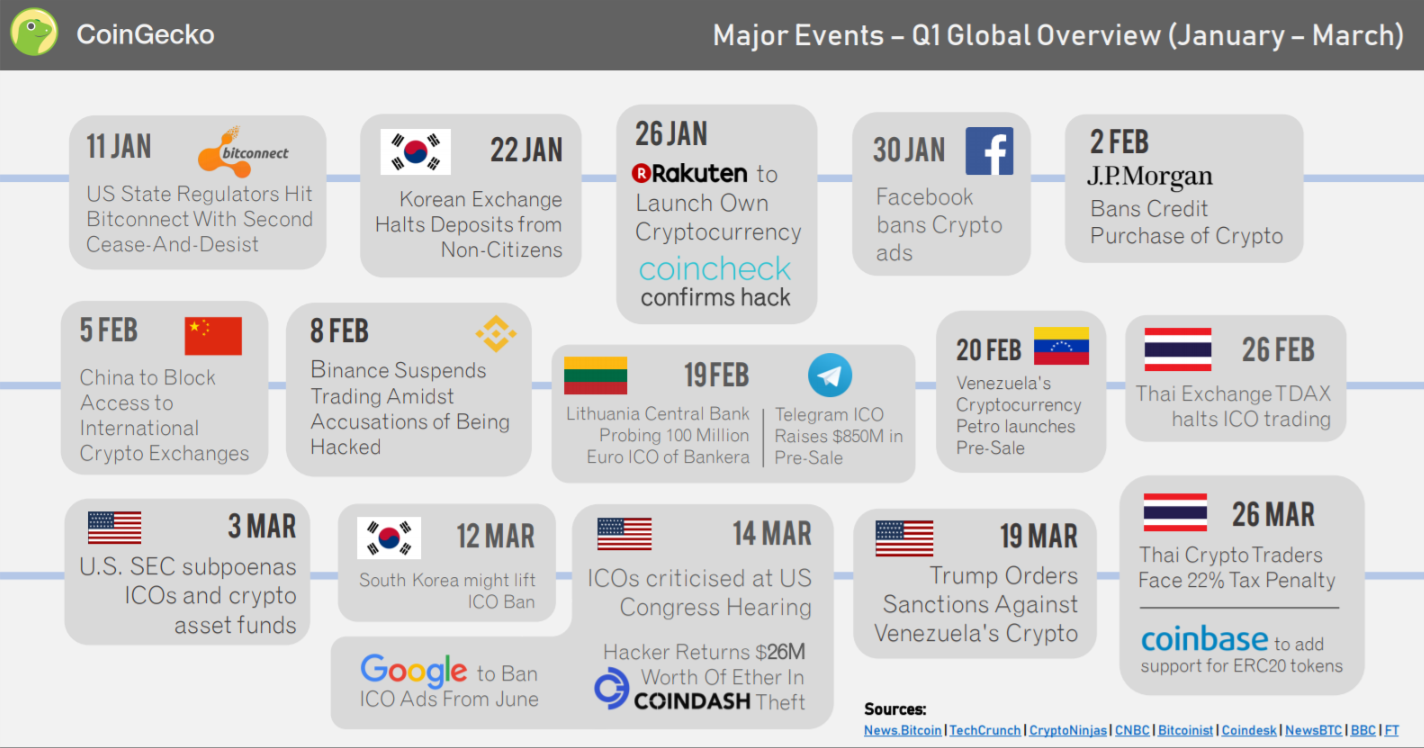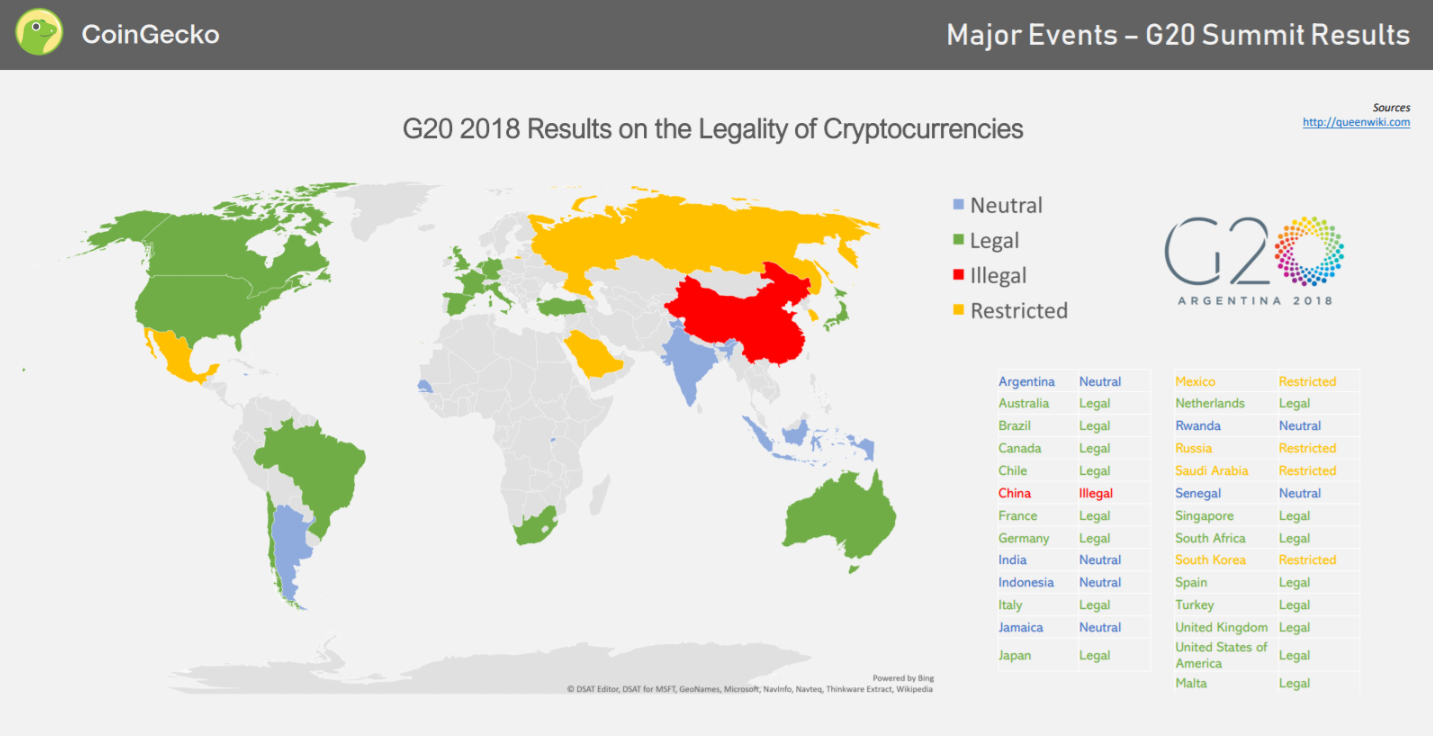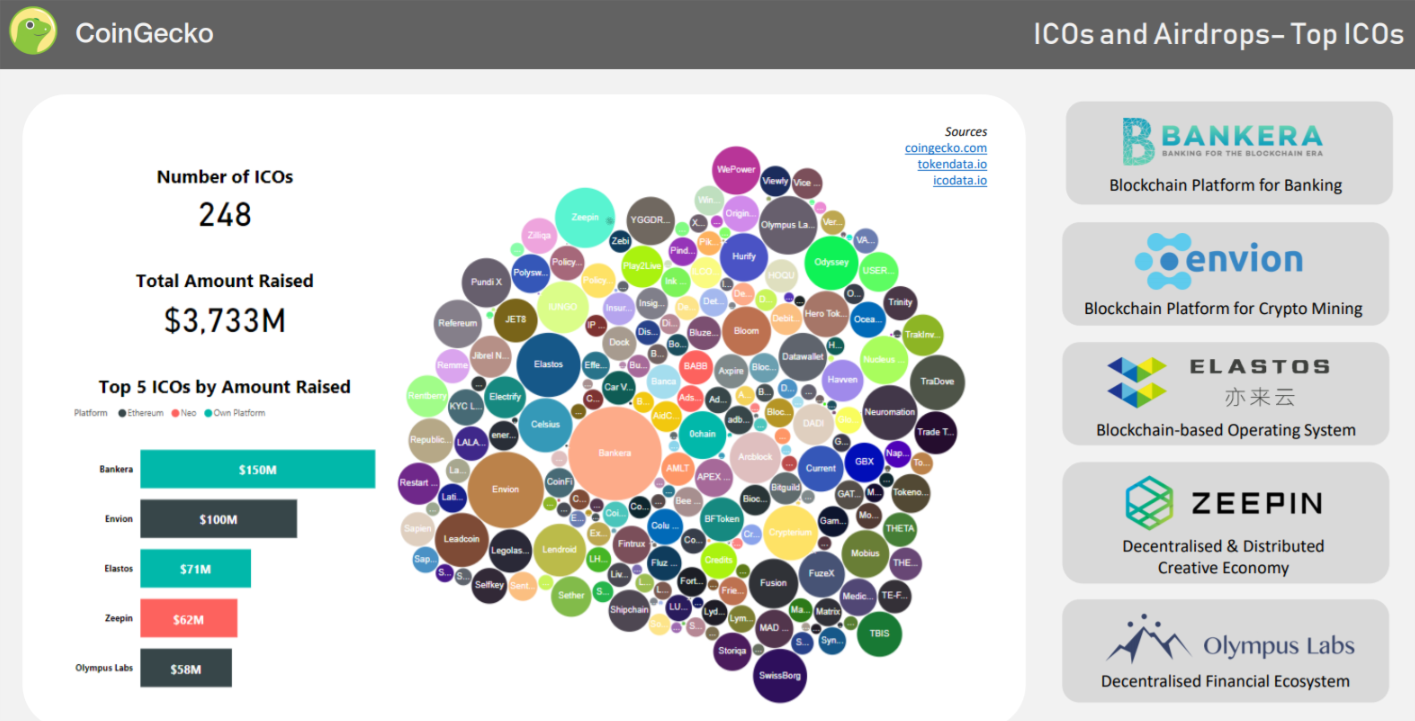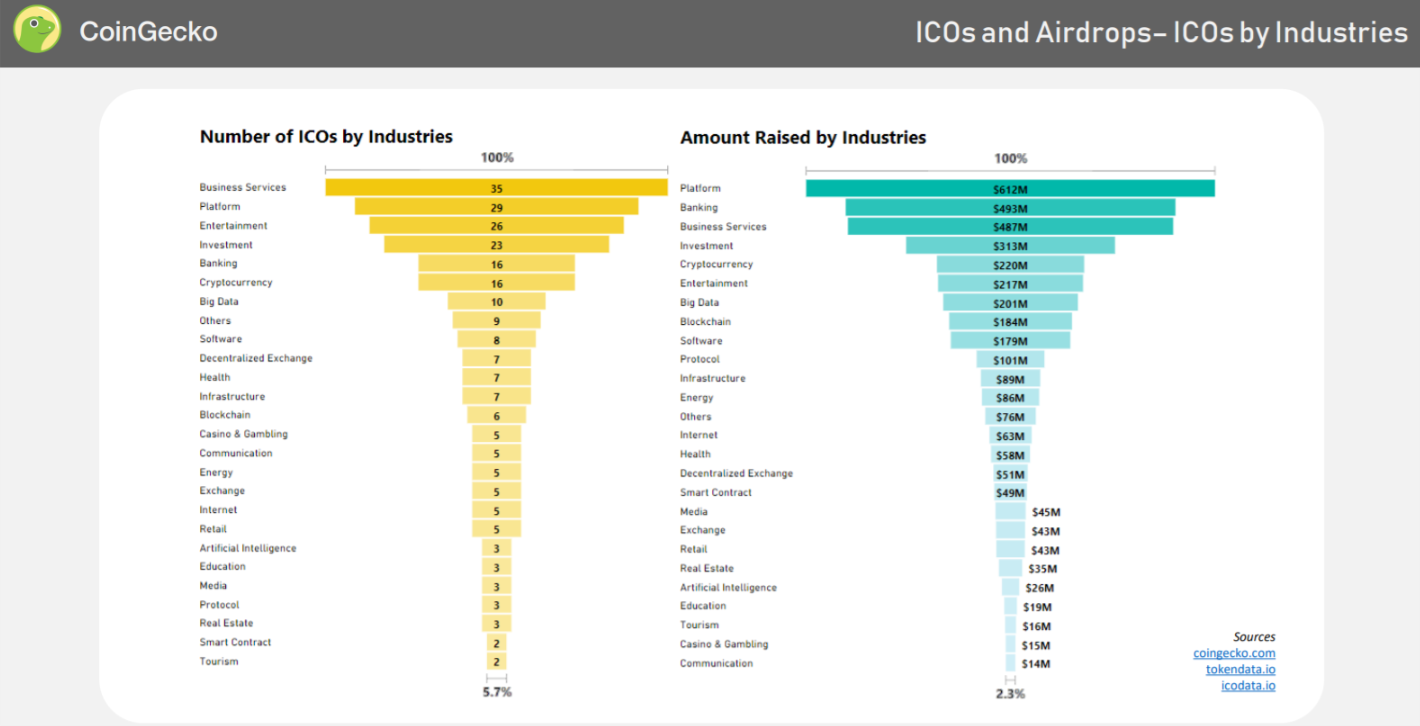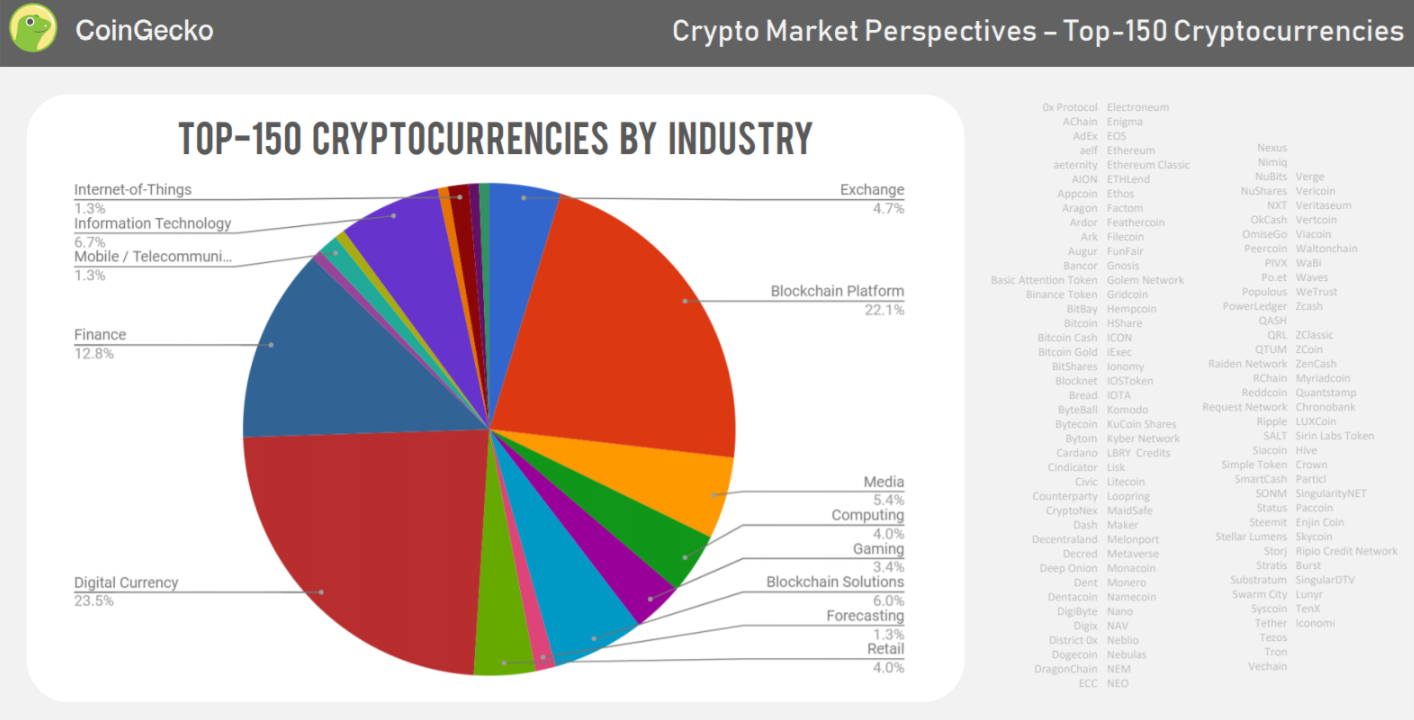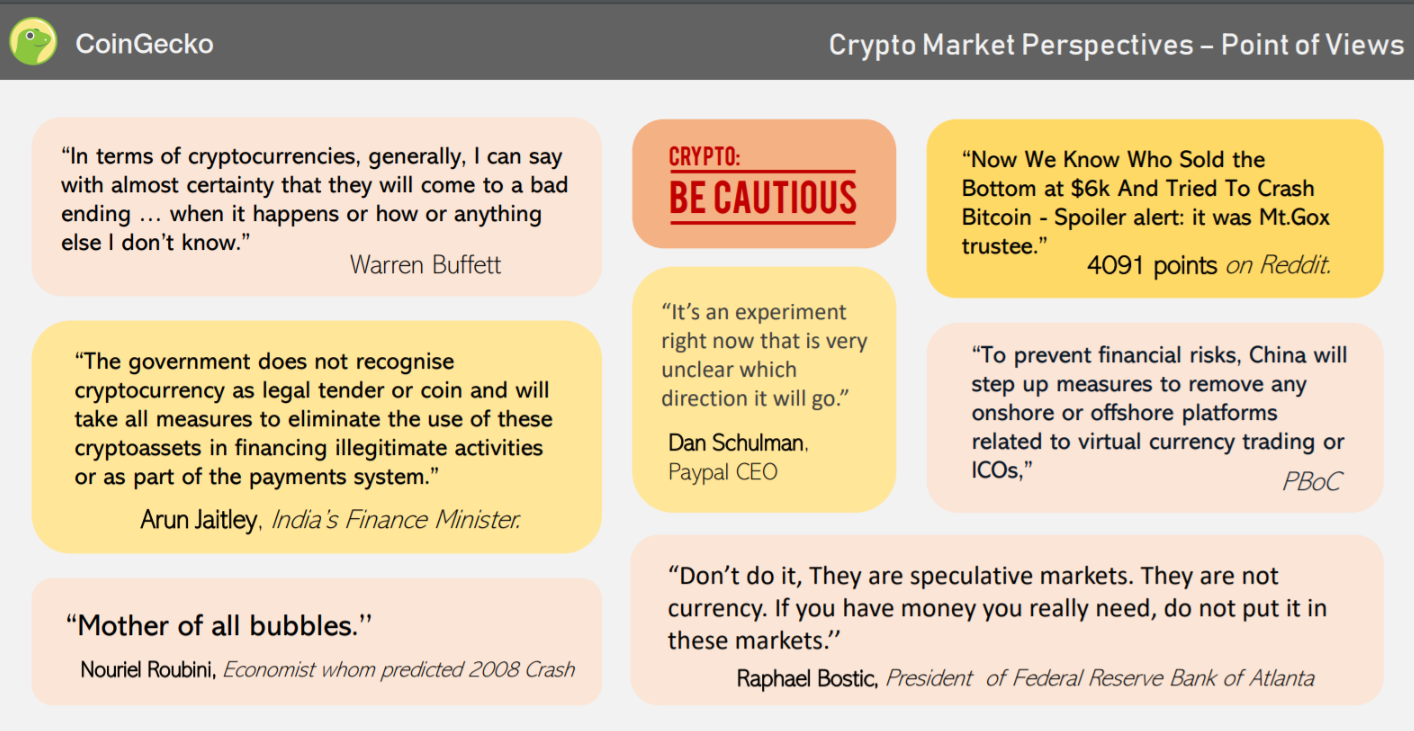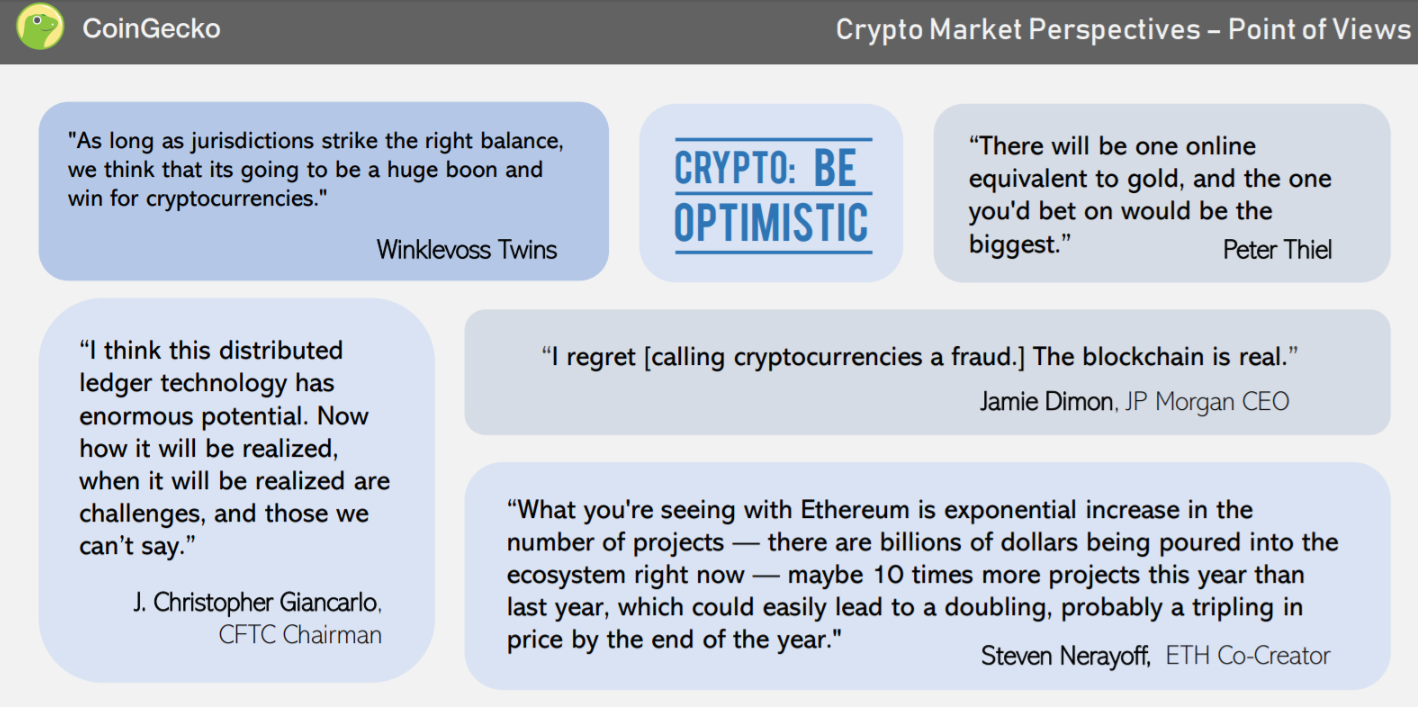After its parabolic growth during the tail end of 2017, the cryptocurrency market was bound to correct itself. This resulted in a dramatic Q1 to the new year, in which cryptocurrencies lost up to 95% of their value. The industry itself, however, kept moving full steam ahead with ubiquitous new projects and ideas.
CoinGecko published an informative report on the state of the crypto world in Q1 2018. We take a closer look at some key data from the report to see what we can learn. After all, a better understanding of history makes us better at predicting the future.
The Cryptocurrency Market
The shape of the graph above is a painful reminder of the severe bear market we endured during Q1. What’s interesting is that this graph only includes the top 30 largest cryptocurrencies by total market value, yet it looks similar to the graph for the market capitalization as a whole.
This once more underlines the market’s strong dependency on Bitcoin’s price. Generally speaking, when Bitcoin drops, the whole market drops, either because people are cashing out or because they sell their altcoins for Bitcoin.
The market as a whole peaked at $832 billion, meaning that the non-top 30 cryptocurrencies only accounted for roughly 12% of the total market value. This percentage went even lower during the bear market, as the smaller-capped cryptocurrencies lost relatively much more of their value than the top 30 coins.
Often, Google Trends metrics are sent around in the crypto spheres, and here we can see why. Right when interest in Bitcoin went parabolic, the market skyrocketed. After the peak, when people started selling their crypto holdings and prices plummeted, general interest in the coins went down the drain too.
Again, this metric is also a strong indication that Bitcoin still holds a firm grip over the market as a whole, indicated by the search trends of Ethereum, Ripple, Litecoin, and Bitcoin Cash increasing after Bitcoin spiked.
In both graphs, we’re seeing that the general trend is still up; the market just had to deal with mass media-fueled FOMO and pick up the pieces after. As displayed by the period of recovery after Q1, nothing has fundamentally changed. We just experienced a huge filtering process in which projects with the best-working products suffered least from the crash.
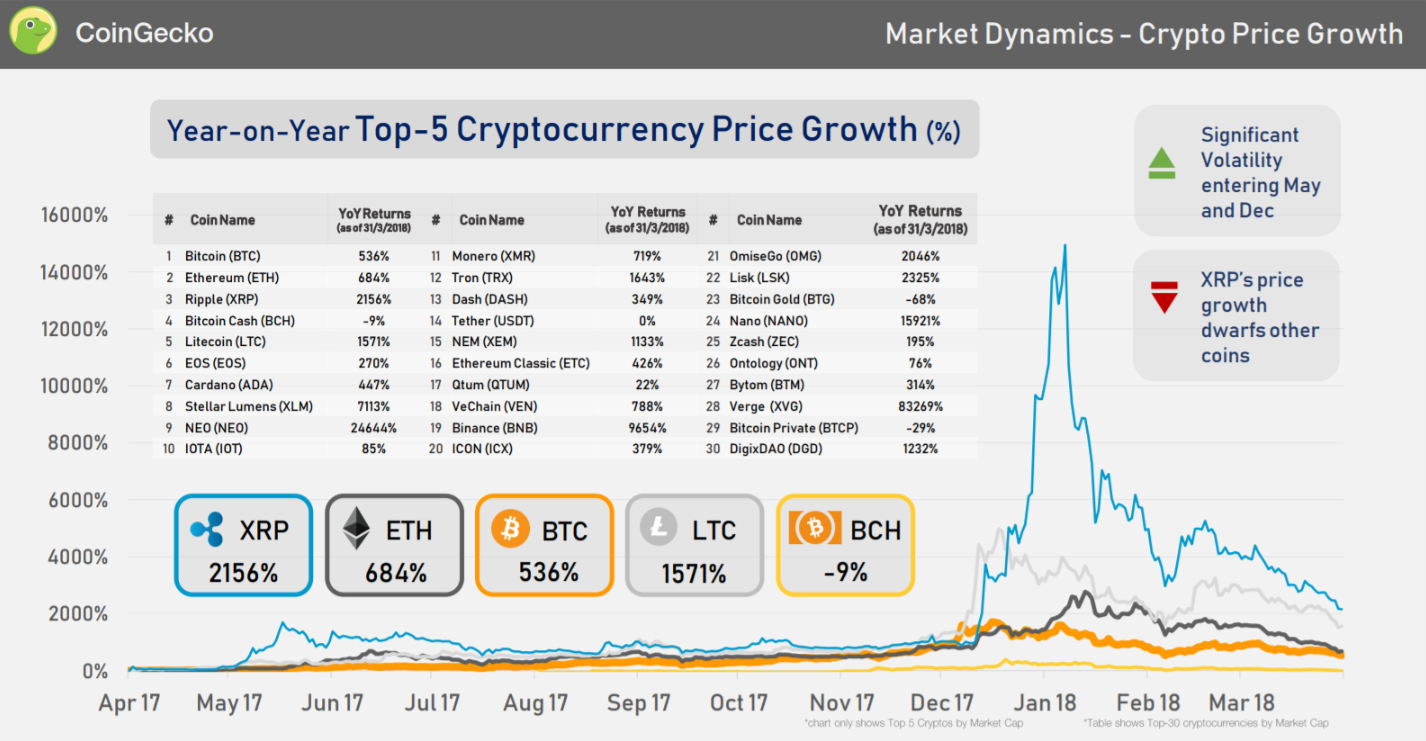
And, let’s be honest, if you were in crypto before November you probably don’t have a lot to complain about. The long-term trend is still up, and these year-on-year gains are still mind-blowing.
Events and Regulations
We can see a general trend surrounding in the major cryptocurrency-related events: FUD. The US started cracking down on suspicious companies and took down the grotesque Bitconnect scam, but it also went after other crypto projects for less apparent reasons.
None of the Asian countries has officially displayed any sort of decisive approach, shifting stances on cryptocurrencies often. China is the best example, having completely banned ICOs and cryptocurrency trading while platforms like NEO and VeChain keep going full steam ahead with the former even hosting ICOs.
Most notable and likely impactful events in Q1 were the announcements that Facebook, Twitter, and Google are completely banning ads for cryptocurrencies. The main reason given by the companies was consumer protection.
However, there does seem to be double standards in place. These companies cited that they do not want to expose their consumers to risky investments, but they have no problem whatsoever collecting their consumers’ sensitive data, creating detailed profiles of their users, and selling their users’ personal information to advertisers. Potential real reasons for these bans are requests from higher up, or more likely an attempt to protect their own business model until they’ve found a way to adjust it to the blockchain standard.
The G20 Summit in Argentina ended up being a source of relief for the crypto community. Most member nations agreed that cryptocurrencies need to be researched better before a uniform regulatory framework can be created. A research deadline was set during the G20 summit; in July 2018 member states will present their data and information which will be used to come up with a global answer to the cryptocurrency phenomenon.
However, whether the G20 will collectively understand what cryptocurrencies actually are, what they have the potential to be, and how to tame them through regulations by July is rather unlikely.
ICOs and Industries
Even though regulations are tightening and more rules surrounding ICOs are to be expected, this Wild West fundraising craze has been going nonstop. In Q1 2018, 248 ICOs managed to attract a staggering $3.7 billion in capital.
We can see that ICOs for platform blockchains have attracted the most funding and are the single most popular type of ICO. This is in line with the immense popularity of blockchain platforms such as Ethereum, EOS, and NEO, and could indicate a trend we’ll keep on seeing over the next year.
However, more platform blockchains join the space, the chances of smaller platforms succeeding is rapidly declining because of network effect. Once certain networks start taking off (like Ethereum already has), it becomes increasingly harder to compete with them.
Besides platforms, a large number of ICOs are targeting the financial industry (banking, investment, and cryptocurrency), business applications, and entertainment industry.
The graph below shows that the number of finance-oriented ICOs and the capital they managed to attract are in line with what the current top 150 cryptocurrencies are doing. However, blockchain-based business and entertainment applications are an emerging trend which few of the current top 150 are operating in. This indicates the rise in popularity and supply of blockchain-based products and services, and thus of utility cryptocurrencies.
Half-Empty or Half-Full?
You know a phenomenon is truly new when educated, experienced, and influential people all have different opinions regarding it. Naysayers keep making headlines by strongly speaking out against cryptocurrencies because of the risk involved, or because they simply do not understand them at all (i.e. Warren Buffett).
On the other hand, optimists acknowledge the risk but also see the opportunity presented by cryptocurrencies. Jamie Dimon (JP Morgan) and Peter Thiel (PayPal) have expressed optimistic sentiments, even though blockchain technology and cryptocurrencies threaten the very business model of their companies.
Concluding Remarks
Of course it’s easy to say this in hindsight, but the cryptocurrency growth of late 2017 was clearly unsustainable and the market was due for correction – likewise, it was due for a correction upwards after Q1 2018. Because of this correction, the market’s outlook is much healthier and sustainable in the long term.
As for regulation, it’s definitely coming, but for now it seems like most regulatory bodies don’t have a clue on how to approach cryptocurrencies. Meanwhile, numerous ICOs are reaching their funding targets, increasing the chances for real, utility-based growth of the market, which is much healthier than speculative growth.
To be cautious or to be optimistic – that is the question. The unchanged fundamentals of blockchain technology and the ever-increasing number of great products and services being launched indicate a bright, yet unpredictable, future.
For more insights on the crypto market in Q1 2018, download the full report from CoinGecko.
Related: 5 Cryptocurrency Trends to Guide Your Investment Strategy in 2018


